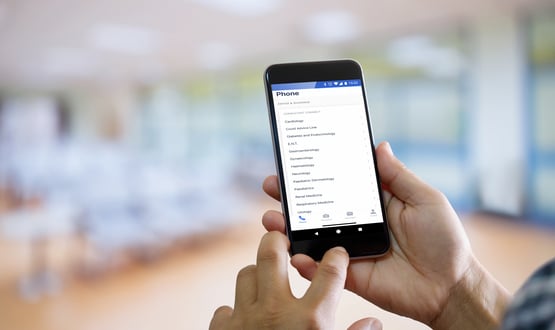Smart Triage shines and sets Rapid Health apart from competitors
- 9 April 2024

Rapid Health’s Smart Triage is helping NHS GP practices and Primary Care Networks (PCNs) solve the chronic 8am rush issue by giving patients the power of self-service. CEO and co-founder of Rapid Health, Carmelo Insalaco, speaks exclusively to Digital Health about the benefits of the software, how it is unlike anything else and ambitions for the future.
From assessing symptoms to facilitating self-booking appointments, Smart Triage safely navigates patients to the most appropriate care setting, without input from practice staff. By implementing the software, GP practices and PCNs can improve patient access, reduce workload, unlock capacity, and manage patient demand more effectively.
“The elephant in the room is when people talk about triage, what they’re actually talking about is online consultation,” Insalaco said. “It is a form from the 1980s to capture information with some small intelligence, which is ask this question if somebody’s asked this – it’s linear logic.”
“The fundamental problem is that at the end of every online consultation, some human has to do some work at the practice… you’re now increasing demand because you’ve opened a new channel, which is completely unrestricted,” Insalaco explained.
Instead of the ‘8am rush’, where everyone is trying to get an appointment in the morning at the same time, Rapid Health’s Smart Triage enables 24/7 access for patients.
Benefits and what sets Rapid Health apart
In terms of benefits for customers, “the majority of our customers leave Rapid Health switched on 24/7,” Insalaco said. “That basically means that if a GP practice has Rapid Health, their patients have access to a GP 24/7. I don’t believe any other supplier is able to do this.”
Insalaco confirmed to Digital Health News that from Rapid Health’s real world evaluation taking place around the country, “the results in the first five days, other suppliers have been unable to do in five years”.
Rapid Health’s software is used across the NHS, including at Manor Court Surgery, where 77% of patients preferred having the ability to choose their own appointment times and 69% preferred to use automated clinical triage.
For those patients triaged as non-urgent and offered the next available slot up to 14 days in advance, most chose an appointment slot between three and seven days in the future, rather than ‘next available’ slot, meaning practices can normalise demand.
Data also shows that before using automated clinical triage, one practice had on average 85 calls during the ‘8am rush’, but after deploying automated clinical triage the practice’s call volumes during the same period were reduced by 47%.
Ambition
Rapid Health’s ultimate goal is to integrate care across different care settings such as primary care, secondary care, and remote monitoring on a single platform.
“Our ambition fundamentally is to integrate care and our intelligence system to fundamentally help patients proactively manage their care, but also get care when they need it,” Insalaco added.




